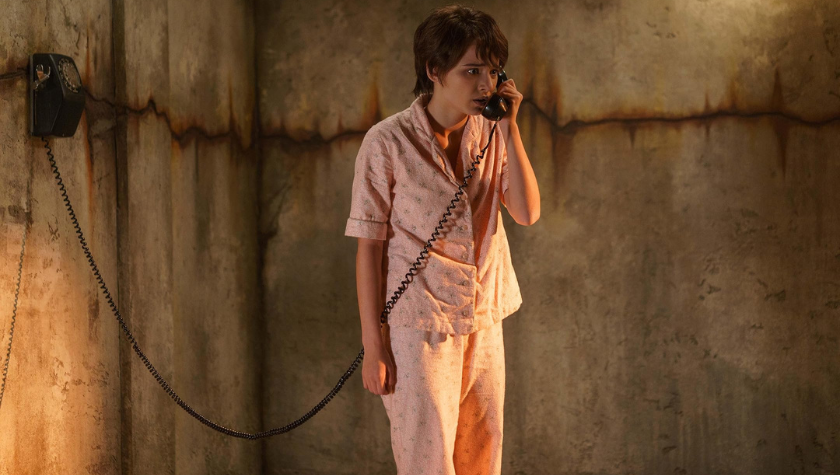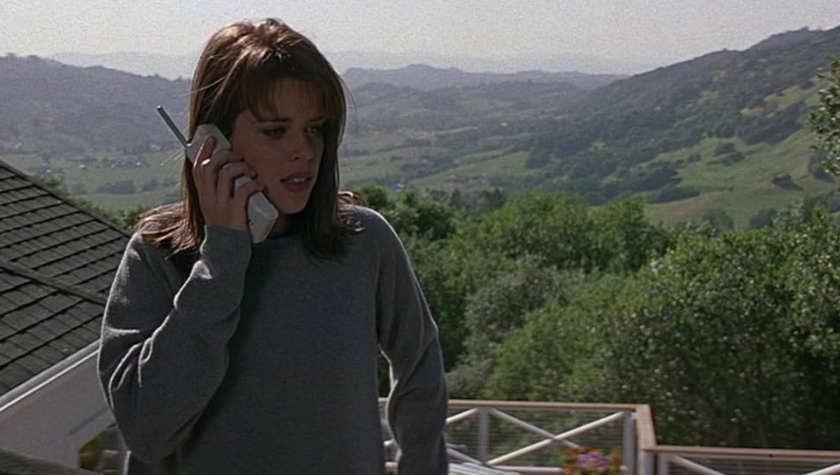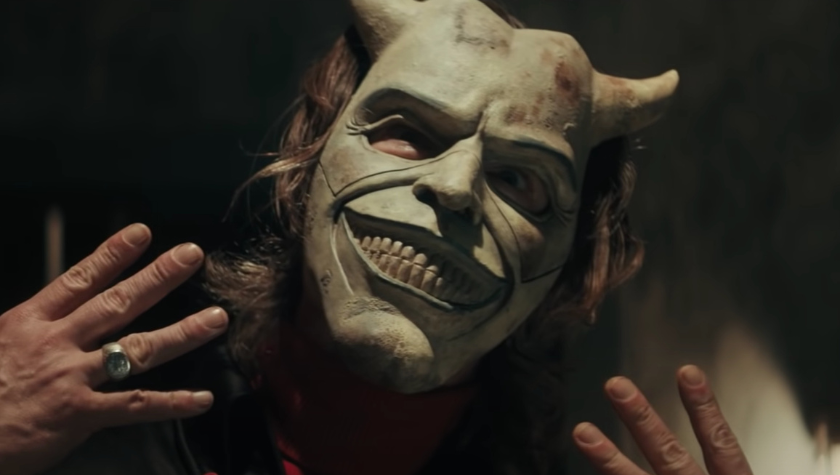Fear in film starts with the screenplay. While directors use tools like camera movement, music, and special effects to create scares, screenwriters have to build that same tension using only action lines and dialogue. So how can a writer create fear on the page that is enough to hook a reader or convince a producer that the story will work on screen?
Black Phone 2 has the benefit of riding the success of the first film, but this sequel strikes different. Filmmakers are aware that they can’t just rehash the same plot/scares as the original and hope audiences will accept that. Movies like Black Phone 2 and M3GAN 2.0 play with the genre and change audience expectations. But they still need the scares on the page to translate to the screen.
Here are 5 ways Black Phone 2 created fear and how screenwriters can use these tools to write their next scary story.
1. Keep it Short for Tension, Long for Dread
Action lines can vary in length. It depends on what you’re describing and the type of scene it is, even what you want to accomplish in the scene. You may start off with longer sentences but as tension builds, you should write shorter, snappier sentences, which can play with the reader who may be taking short breaths and moving their eyes quickly.
"Short, tight sentences. There's a weird psychological effect,” says C. Robert Cargill, co-writer of The Black Phone and Black Phone 2, in a Slash Film interview. “Long sentences make people comfortable, short sentences make people tense. And what you do is as you get into the scene, you start shortening up your sentences, and then you start using paragraphs and you start using just straight up single lines of what's happening.”
It’s all about pacing. Quick lines can get the script reader’s heart pounding, whereas a longer approach could add dread as you build suspense.
Cargill continues, “A sense of creeping dread might be filled in with a lot of extended descriptions, a layout of the mood, and an explicit portrait of the exact tone the screenwriter wants.”


2. Utilize a Single, Repeating Noise
Music cues work great in horror movies. Think about the theme from Halloween that kicks in when Michael Myers stalks his prey. Or the static sound of a VHS tape in The Ring. Once these cues are provided, the expectation that something bad is going to happen is now in the audience’s mind.
In Scream, it’s a ringing phone. The movie opens with the phone ringing, and the audience immediately sees the terror that follows. Now, whenever we hear it, we expect the Ghostface killer is on the other end.
Black Phone 2 also has a ringing rotary phone. From the first film, the audience knows that the person on the other end of that call is a ghost. Every time we hear that single noise, it causes us to have deeper engagement in the scene.
Writing this type of noise in a screenplay falls in line with Cargill’s ‘short, tight sentences’ approach to tension. For example:
The black phone rings.
Finney eyes it.
Rings again.
His hands clench. He swallows hard.
Again.
He grabs the receiver.
Answers.
That’s only 21 words, but a reader can visualize the tension the character experiences, and allows them to feel how the audience watching the movie might feel too.
3. Dealing with Trauma
Most of the best scary movies seem to have the protagonist dealing with some sort of trauma. In The Black Phone, Finney (Mason Thames) and his sister Gwen (Madeleine McGraw) are both scared of a prowling serial killer and the abuse and alcoholism from their father, as well as the trauma of their mother killing herself years before. It’s a lot to deal with, but it also can serve two equal purposes: separating people (in this case the alcoholic father from his children) and bringing people together (Finney and Gwen must stick together).
Trauma often acts as a shield too.
In Black Phone 2, there is still inherent trauma due to the events in the first film. Finney smokes marijuana to mentally and emotionally deal with his memories, similar to how his father, who is now in recovery, dealt with the loss of his wife by drinking. Finney is also quick to fight and tries to tune out the world. How he solves the issues around his trauma will come out by the end of the film, which is also the case for the trauma Gwen experiences throughout the sequel.
Other examples include Scream where Sidney (Neve Campbell) is dealing with the trauma of her mother’s murder, and Clarice (Jodie Foster) in Silence of the Lambs who also is carrying childhood trauma.


4. The Intended Victim is Almost Always Alone
Victims in horror movies are almost always left on their own. It might be someone in a dream in A Nightmare on Elm Street or a killer slashing their victim in a living room in I Know What You Did Last Summer. Placing victims in a scene alone against a “monster” will force them to battle one-on-one for their life, and in horror movies they may not make it out alive.
Simply indicating a team should “split up” is a trope in horror movies because it isolates characters.
In Black Phone 2, Gwen is frequently having dreams that put her into scary situations against the Grabber (Ethan Hawke). These vivid dreams provide clues, but also put her alone in a world where someone is trying to cause her harm.
At one point in the movie, Finney, Gwen and a friend head up to a camp to get to the bottom of the kids Gwen sees in her dreams. Although there are a few people at this camp, the trio is mostly alone (even Gwen ends up separated from the two boys and must sleep alone in a cabin). Not only are the kids alone, but the filmmakers keep separating them as much as possible.
5. The Villain Must Be Frightening
Well, duh. But how many times have you pulled back on what a villain would do out of fear it would be unbelievable, or might reflect poorly on you as a writer? The Black Phone is a genuinely successful horror movie, and the writer had to create a character that kidnaps boys, tortures and murders them.
This genre is horror, so it’s okay to go dark. Really dark.
Black Phone 2 reveals more about the Grabber that makes him even more sinister. What’s worse is the new way in which he’s a threat. In the first movie, he’s human. In this one, he’s a ghost just like his victims who could reach out to Finney through the phone. The Grabber remains frightening because we already know what he did while he was alive, now we see what he will do through the phone and in the dreams he haunts.
Fear comes from knowing what the villain is capable of, and may do, at any moment.
“I don’t really think in terms of symbols and metaphors, or even themes for that matter. I think that I try to come more from a place of characters, and the idea of this incredible tragedy that can define lives in such a traumatic way,” co-writer/director Scott Derrickson shared in an AU Review interview.
From there, he, along with co-writer Cargill, could craft a horror film that separates itself from the first Black Phone while playing into new types of fear.


Black Phone 2 offers valuable lessons in how to effectively build fear in your story. As a sequel, it doesn’t spend much time reintroducing characters, allowing more room to deepen the atmosphere and tension established in the first film. One of the key takeaways for horror writers is how fear is rooted in character dynamics. A compelling, violent antagonist with a clear desire to dominate or destroy can heighten the stakes and make the audience feel the threat more intensely, ultimately making your protagonist's struggle more powerful and terrifying.

